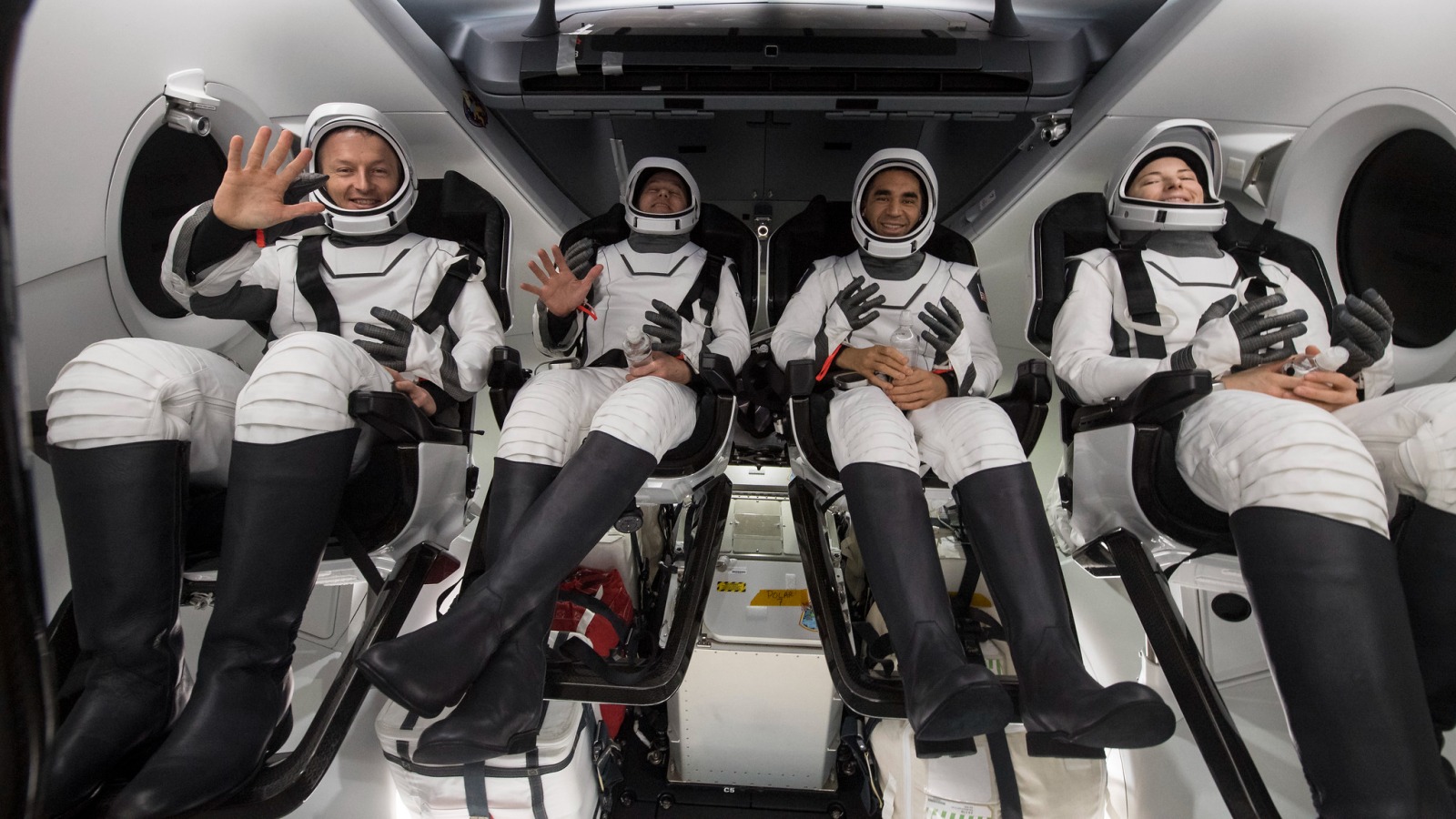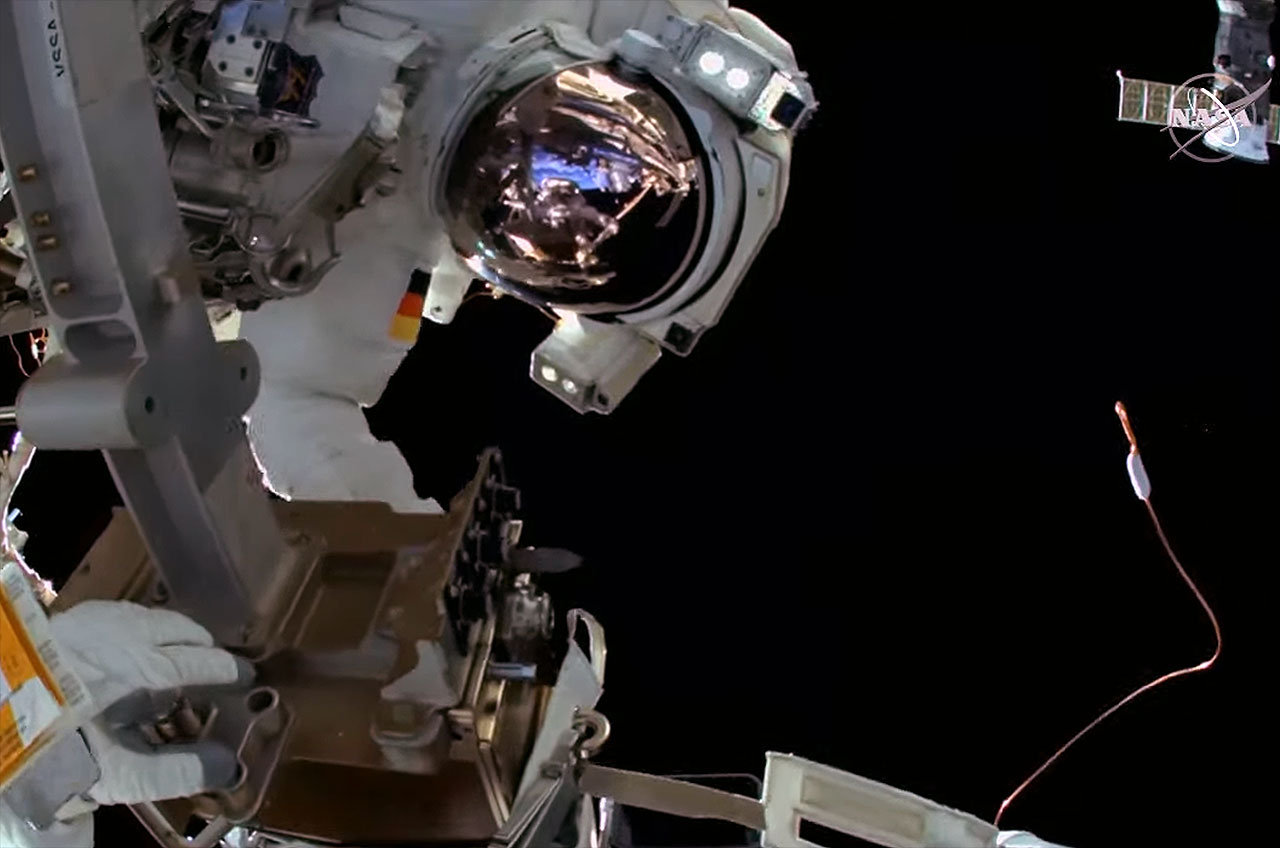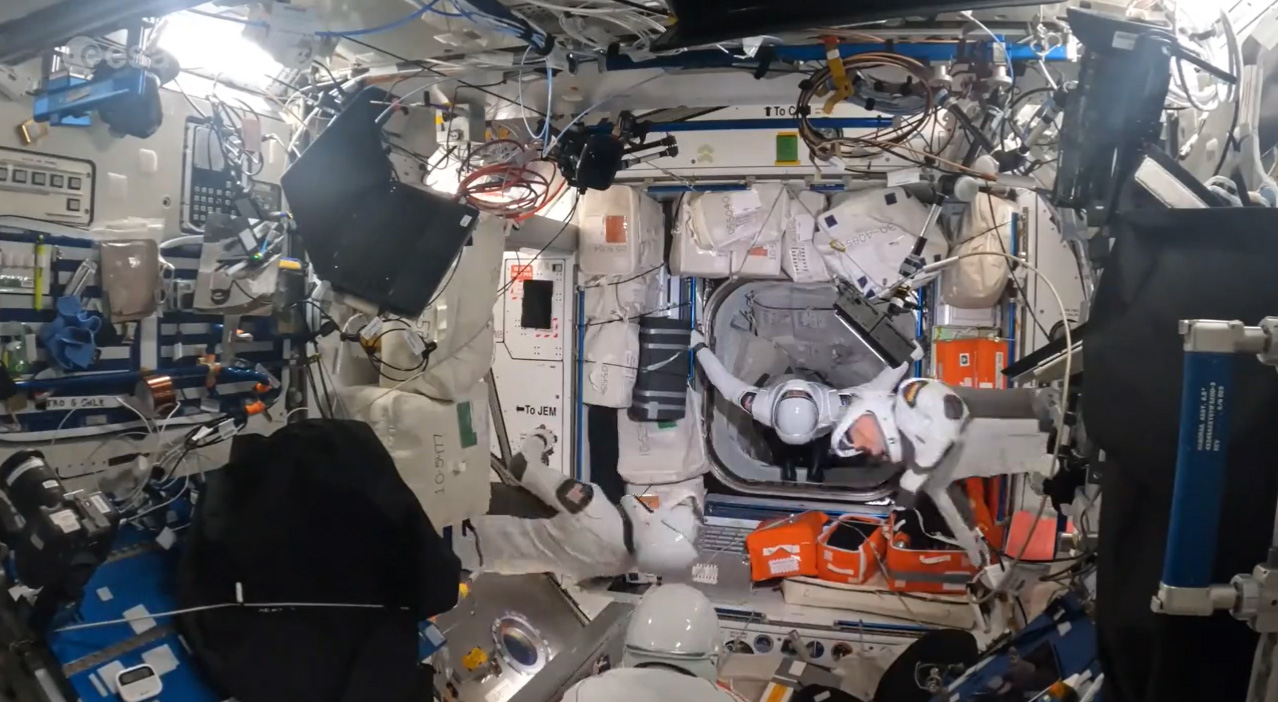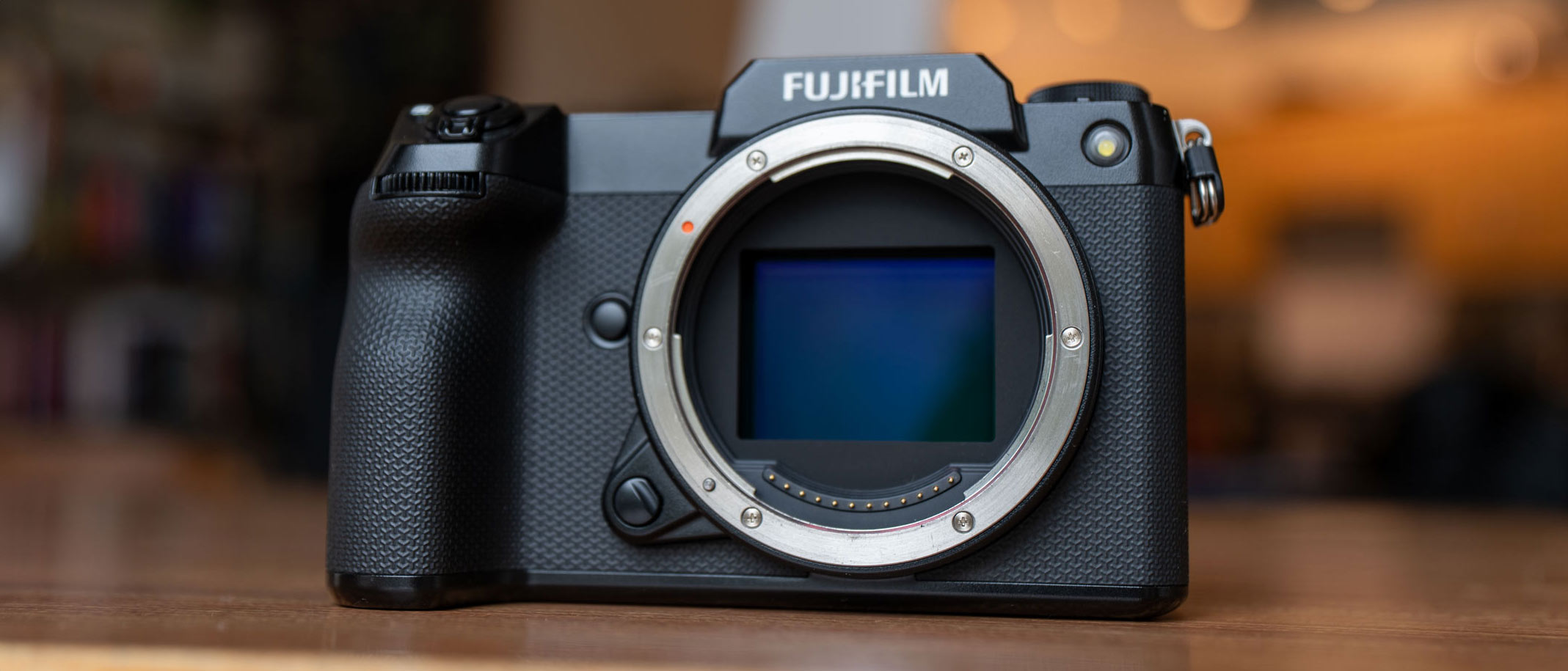SpaceX's Crew-3 astronauts dish on their action-packed 6 months in orbit
The astronauts dodged space debris, welcomed a pioneering private astronaut mission and more.

From dodging space debris to welcoming the first-ever fully private astronaut mission to the International Space Station, SpaceX's Crew-3 mission had a very eventful six months off Earth.
Crew-3 docked with the International Space Station (ISS) on Nov. 11, and the mission's four astronauts witnessed a rapidly changing space environment almost from the moment they arrived. For example, a Russian anti-satellite test on Nov. 16 created a cloud of debris that soon forced the astronauts to shelter in their SpaceX Dragon capsule Endurance as a precaution.
"Scared would be the wrong word" to describe how the crew felt in those minutes, Crew-3 pilot and veteran NASA astronaut Tom Marshburn told reporters during a livestreamed press conference Wednesday (May 11). He was speaking five days after his safe splashdown off the coast of Tampa, Florida, with fellow NASA astronauts Raja Chari and Kayla Barron and the European Space Agency's Matthias Maurer.
"I think 'acting with a purpose' — that's what we were doing," Marshburn said of the crew's activities during their "shelter in place" procedures. "But even from the very first call we got from the ground," he added, "it was pretty much like we trained. I was like, 'OK, here's the way you need to have this procedure.'"
In photos: SpaceX's Crew-3 astronaut launch for NASA
Here on Earth, international relationships changed markedly on Feb. 24 when Russia, a major ISS partner, invaded Ukraine. Russia's actions were condemned internationally, and many of its space partnerships splintered as a result.
However, despite rumors of trouble, work on the space station has continued without interruption.
Breaking space news, the latest updates on rocket launches, skywatching events and more!
"As far as the international relations go, that has not changed at all, and we've had a 40-plus year relationship with our international partners and with our Russian colleagues as well," Marshburn said, referring at least as far back as the joint Apollo-Soyuz Test Project mission of 1975.
"In my opinion, one of the greatest legacies of the space station will be that we are all living together — all the international partners together," he added. "We're working together; we're doing what I believe to be great things. And we rely on each other for our survival. So, on the space station, that has not changed at all."

Marshburn also paid tribute to the contributions of the Ax-1 crew, the debut effort by Houston-based company Axiom Space to send private astronauts to the space station. (Like Crew-3, Ax-1 was flown by SpaceX.) He said Crew-3 was very impressed by the "gracious and kind" Ax-1 astronauts, which included three paying customers and former NASA astronaut Michael López-Alegría, who now works for Axiom.
Marshburn said he was especially impressed with the Ax-1 crewmembers' work given that their training cycle lasted only a few months — much shorter than the typical two years endured by a space station crew.
"What they brought up with them was a complex suite of experiments; it was challenging for us to...get our work done, as well as to assist them, but overall it was extremely positive. We enjoyed getting to know them," he said.
Marshburn's three crewmates were all rookie astronauts, and each one enthused about the opportunity to experience space for the first time. Maurer said the Crew-3 mission had "all the elements I was hoping for: outstanding launch, perfect mission, with a lot of science in between." (Marshburn had two spaceflights under his belt before Crew-3.)
Unusually, every person on Crew-3 even got to experience a spacewalk. Since extravehicular activities are dependent upon the pace of launching new hardware and maintenance work coming up, spacewalks generally aren't firmly scheduled until very late in a crew's training cycle, or when the crew is actually in space.

Barron said she was amazed at how well the training replicated what she experienced in space.
"We were prepared; we were technically ready," she said during Wednesday's telecon. "We were really ready to launch when we launched and go up there and do some incredible things. It was just this awe-inspiring experience and incredible honor to represent the NASA team and family."
Chari, Crew-3's commander, said he was impressed by the teamwork he saw in space and shared an anecdote about participating in "Mustache March." Chari, a United States Air Force colonel, was referring to a branch tradition meant to honor Robin Olds. Olds was a Vietnam-era ace fighter pilot who maintained a handlebar mustache and snubbed "grooming regulations" of the era, according to a USAF blog post.
Chari said he removed the mustache before landing. "My wife would not tolerate the mustache ... and it would also throw off the Dragon center of gravity," he joked. "So I shaved it."
Follow Elizabeth Howell on Twitter @howellspace. Follow us on Twitter @Spacedotcom and on Facebook.

Elizabeth Howell (she/her), Ph.D., was a staff writer in the spaceflight channel between 2022 and 2024 specializing in Canadian space news. She was contributing writer for Space.com for 10 years from 2012 to 2024. Elizabeth's reporting includes multiple exclusives with the White House, leading world coverage about a lost-and-found space tomato on the International Space Station, witnessing five human spaceflight launches on two continents, flying parabolic, working inside a spacesuit, and participating in a simulated Mars mission. Her latest book, "Why Am I Taller?" (ECW Press, 2022) is co-written with astronaut Dave Williams.

